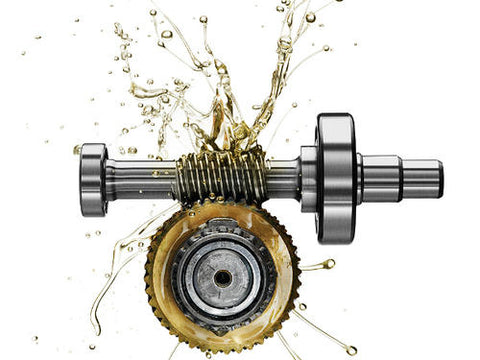
All about transmission oil
Share
The transmission oil must protect the gears from the gearbox and clutch discs, at the same time that a smooth and precise gear change is facilitated. We will explain how oil performs and what qualities are essential in its formulation.
The transmisson and gearbox
The function of the gearbox and transmission seems simple: transmitting the force of the engine to the rear wheel. But, to comply with this task, the transmissions are equipped with complex change gear systems, multidiscus clutches and various actuators, located in smaller and smaller and compact compartments, with multiple oil passages in very small diameter. The transmission oil must be able to lubricate with sufficient volume all these gears, while maintaining constant fluidity to be able to pass correctly through all ducts. The oil is forced to withstand large loads trapped between the gears and to dissipate a large amount of heat, the main enemy of the transmission oil. All this without forgetting its main function: protect the surfaces from direct contact between them, creating a protective film.

Recapitulating, we can define the main tasks of transmission oil in:
- It works as a hydraulic fluid: it is used in modern engines to activate chain tensioners mainly, so it should be to support this compression stress.
- It provides optimal friction: clutch discs need a very constant and precise level of friction to get hooked and unraveling correctly.
- Protects the wear gears: it helps cushion the heavy loads between your teeth, creating a protective film that prevents metal erosion with metal.
- Fight against heat: motorcycle transmissions generate a lot of heat, which the oil is responsible for dissipating. This heat generates oxidation of the oil.
Oil change
Both excessive heat (oxidation) and large pressures break the molecular bonds of the oil and degrade it continuously, hence its change is required every interval of kilometers. At the same time, the oil is loaded with metal microparticles that drags its path and also absorbs environmental humidity, which sneaks into the transmission.
When the oil is degraded or its level is very low, irregularities and difficulty change are produced, which indicate that something is not going well. It is important to replace the oil before this happens.

What is the best transmission oil?
Although it seems complex, the answer to this question is very simple: the best oil is the right oil.
Depending on the segment and the motorcycle model, the transmissions can be automatic or manual, be integrated with the engine or separated from the east and even in independent transmission and primary, as in the Harley-Davidson Big Twin models.
These differences must be used a specific oil for each case, if possible synthetic and comply with or overcome the manufacturer's specifications in terms of properties and additives. Similarly, it will always be essential to meet the recommended oil change intervals, and even reduce them if the vehicle is used in extreme conditions (heat, sand, competition, very loaded with luggage ...).
Frank Burguera
Are you looking for a good transmission oil for your motorcycle? Check out our selection of the best motorcycle oils in This link.
#mecanicaharley
